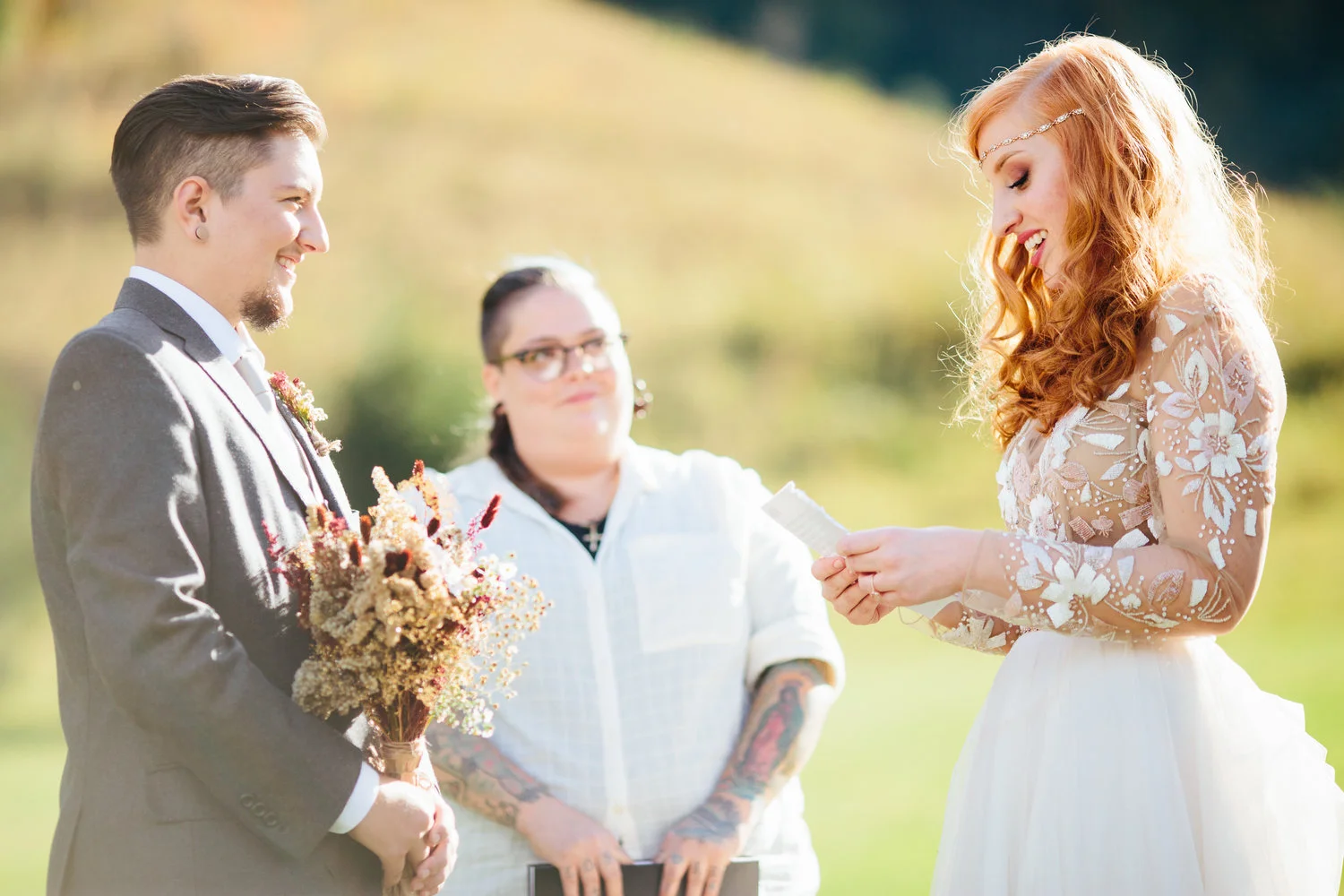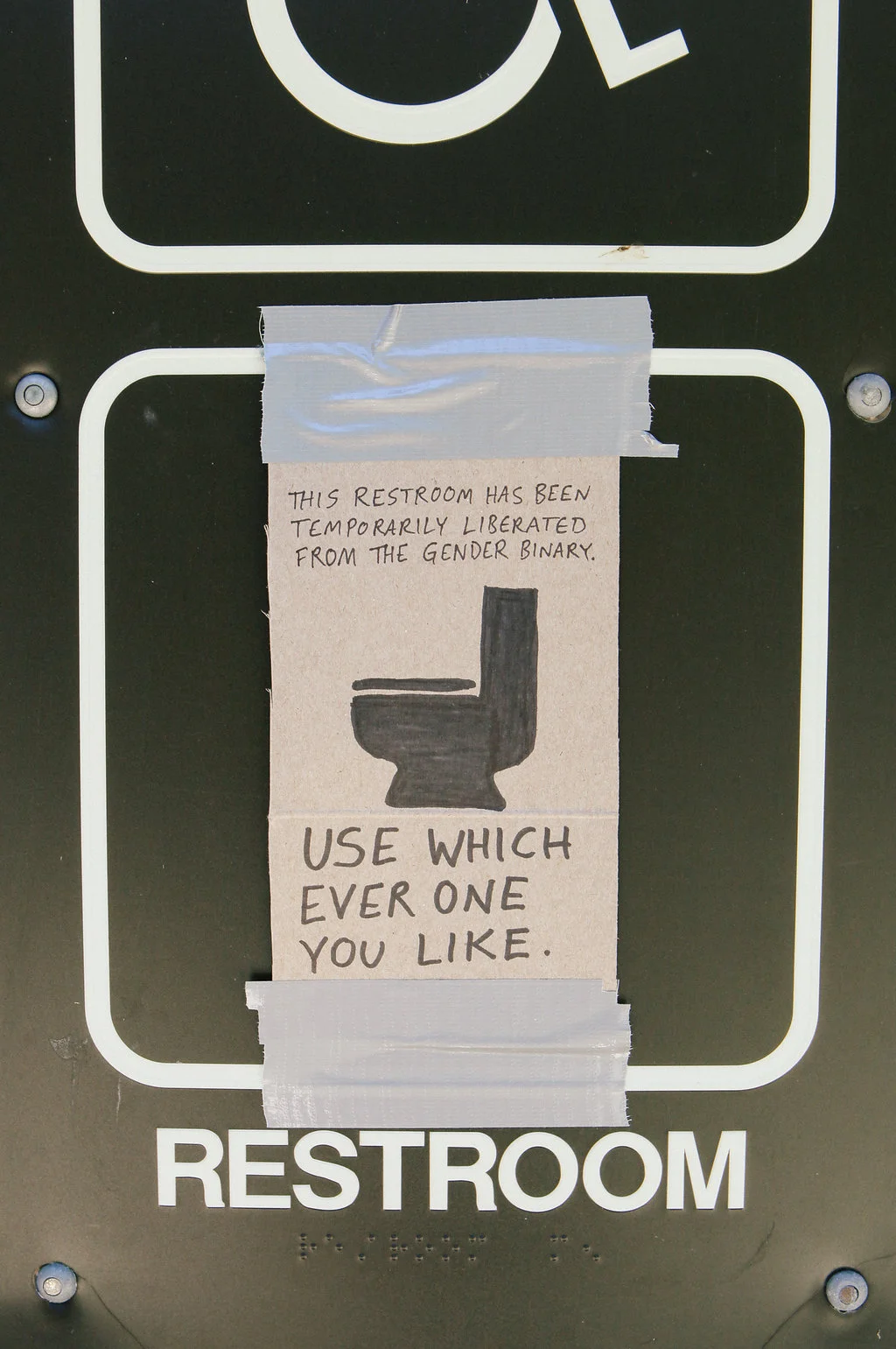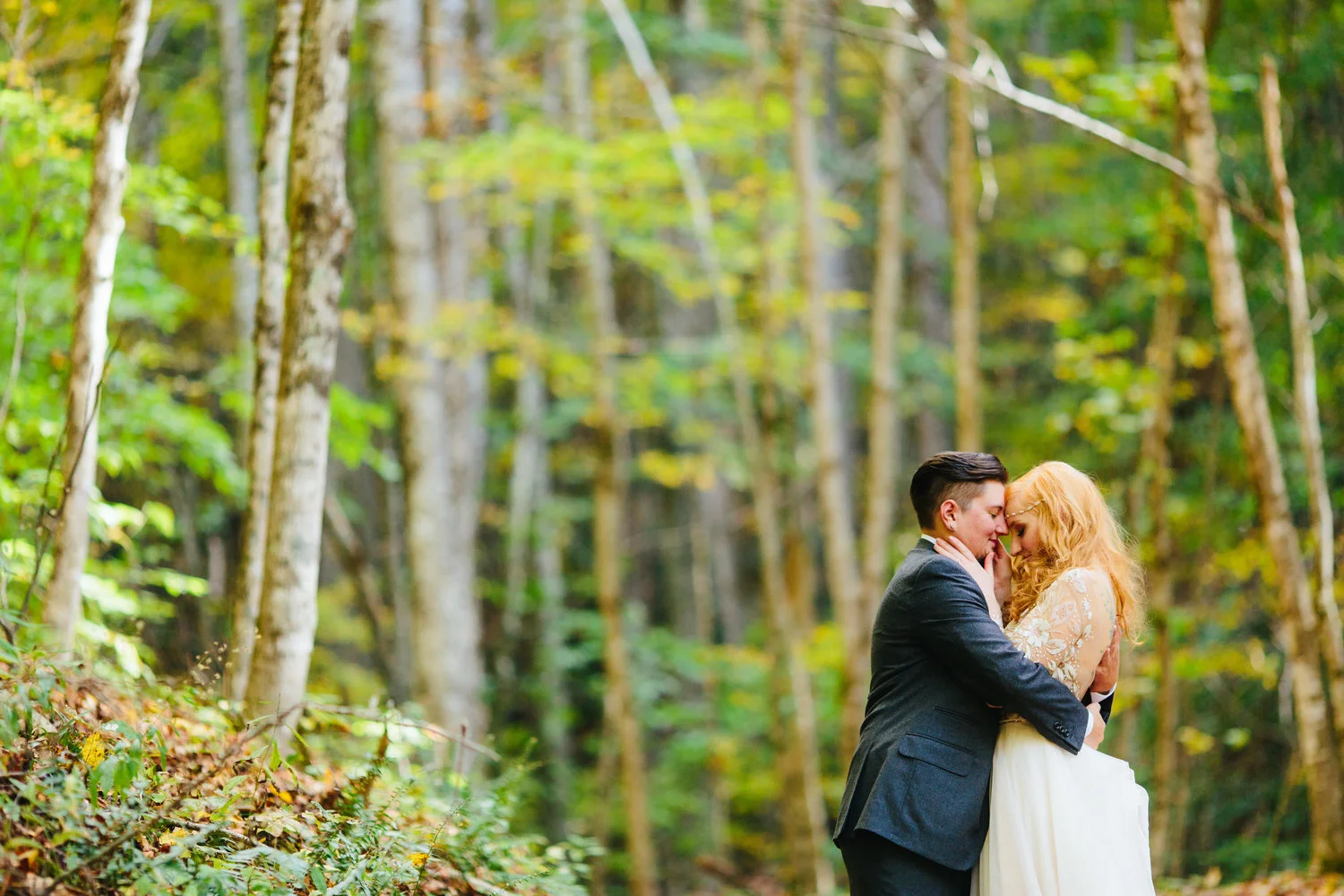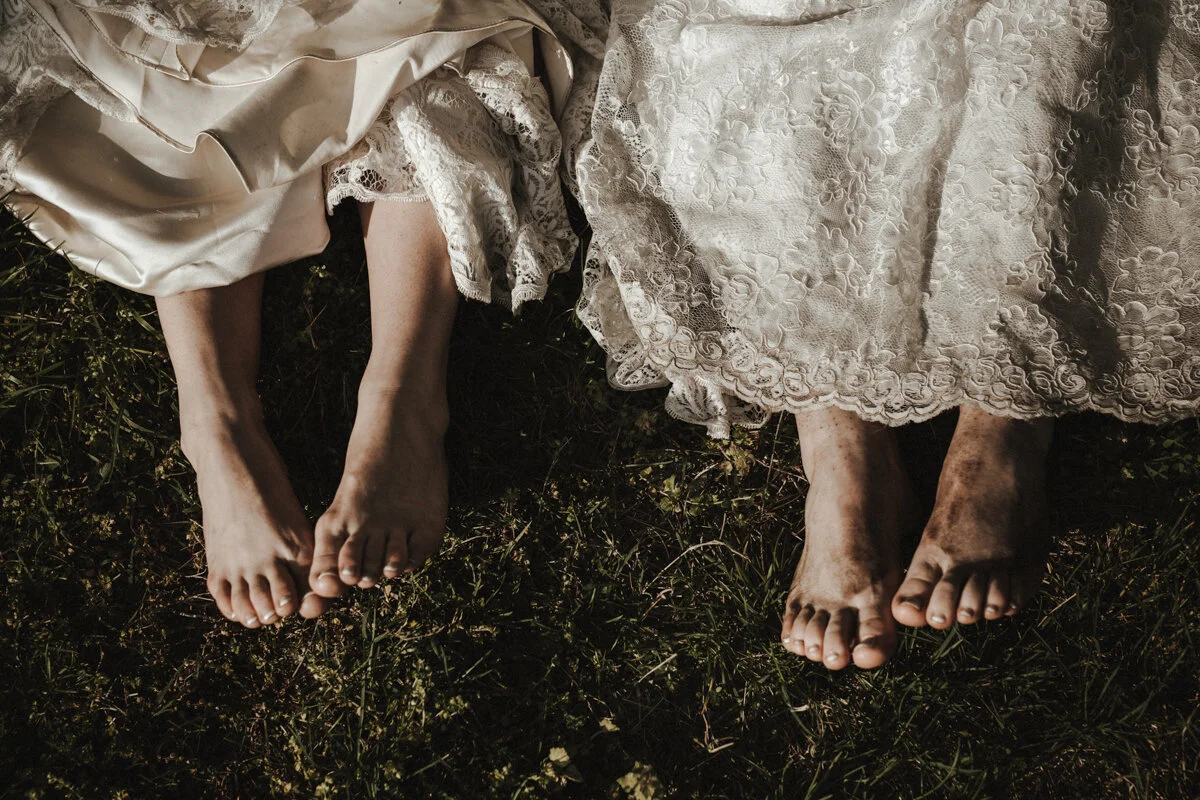6 Ways to Have a More Trans-Inclusive Wedding
/“You’re a photographer?”
I nodded. I knew one of the reasons I got a call back for the interview was because they desperately needed new product shots for their social media presence.
“So where did Caitlin Shea Photography come from?”
“Well, I’m trans… That’s my birth name. I haven’t purchased a new domain name yet to reflect the change.”
There was a long pause as we both sat in the back storage room in rickety chairs with a xeroxed copy of my resume on the table.
“So is this,” he said gesturing to me with an open hand, “done? What have you had medically done?”
I wish I could say that I left the interview right then and there, but navigating the world as a trans person, especially one still in the process of transition, has thrown me more curveballs than I’ve known how to handle. Navigating economic stability, safety, and — dare I venture to say —happiness in my personal and political life has been increasingly difficult, with my very existence growing more politicized with each hormone injection and doctor visit.
Earlier this week, the New York Times released a bombshell article detailing a leaked memo that narrowly defines gender as immutable biological characteristics determined by genitalia at birth — a definition that the Department of Health and Human Services would have adopted and enforced across major governmental agencies including the Departments of Labor and Education.
Trans people have always existed and will always exist regardless of official documentation. Full stop. While the Times argued that this could in essence erase trans people, this ideological rhetoric gives credence to the diametric argument that trans people either exist or they don’t. This nefarious framing relies on granting all sides equal weight in order to appear impartial despite the fact that one side may have significantly more scientific and sociological evidence to support it. Even the premise of binary, immutable, and clear genetic categories is a farce as it ignores the existence of intersex people and biological variations between cisgender men and women. A brief look at Indian runner, Dutee Chand, who was disqualified for having a naturally higher testosterone level than the average woman already teases at how wildly complicated the idea of clear-cut genetics is.
Ultimately, this memo isn’t about whether or not trans people exist, but whether we are legally recognized as our authentic selves. If adopted into policy, this definition would have significant outward-reaching impacts, specifically in regard to Title IX protections.
Some have argued that it would remove federal protections for trans and gender-nonconforming people, broad federal protections that are much needed following state’s inconsistencies with more specific policy. On the state level, most states presently do not offer anti-discrimination policies for employment or housing. While the lack of policy on a state by state basis is harmful, during Obama’s presidency definitions of sex were more formally expanded beyond how some were already interpreting existing laws; protections of sex included gender identity.
Without these protections, trans people wouldn’t have legal safeguards against discrimination. Interviews such as mine mentioned above would be legally permissible. With the community already facing such rampant economic disparities, I suspect the gap in socioeconomic standing between transgender people and their cisgender counterparts will only grow.
It’s a lot to sit with and the potential rippling impacts are heavy.
You may be asking why you’re reading this on in a wedding publication, and it’s a good question, but for your transgender and non-binary guests or partners, the answer is clear. There’s no way to cleanly segment politics out of life when your identity is politicized.
Like most trans men, I look young. It’s my tiny stature and all that prepubescent peach fuzz as I go through second puberty. When I go to a bar, I’m carded, and I completely understand why. I don’t look old enough to drink, let alone drive. But the hardest part is when the bouncer sees the little “F” marking my sex and asks to see additional IDs and credit cards. It is alienating and uncomfortable to see dozens enter without issue and be the one asked to step aside as they look through my paperwork as my friends stand idly to the side, unsure how to be the best ally they can. They’ve never encountered this but I regularly have. While you may be thrilled for your open bar, your trans guests may be dreading it for that moment. For the moment when, on a day of celebration and love, they’re reminded that they’re ‘other,’ and they’re forced to explain their existence.
So what can you do to make your wedding more welcoming to your trans and gender nonconforming guests?
1. Ask the Venue in Advance Whether They Have Gender Neutral Bathroom Stalls.
While many trans people want to use the bathroom aligning with their gender identity, some identities don’t fit within “men” and “women” bathrooms. For people like me who are still visually androgynous, both feel incredibly unsafe. If there are not gender neutral bathrooms available, see if you can tape new signs over the existing ones that simply designate whether it’s a bathroom with a urinal or stall and not a specific gender.
2. Brief Vendors in Advance That There Will Be Gender Nonconforming Guests in Attendance and To Be Mindful of Their Language
Whether it’s bartenders who might need to be reminded that the “M” or “F” on an ID may not mean it’s a fake to your photographer who may say, “Okay, we need the men to stand over here, and ladies over there,” a reminder doesn’t hurt. As a photographer, when posing people I tend to rely on gender neutral instruction, such as “Let’s have everyone with a pocket make sure that you don’t have a lot of bulky stuff showing. Keys and phones out of frame. If you’re holding a bouquet, you need to lower it.” While it’s best to hire inclusive vendors who are already adopting gender-inclusive practices, even gentle reminders can go a far way.
3. Cut the Bouquet and Garter Toss
I get it, it’s fun to throw things and even more fun to watch people try way too hard to catch them, but for your trans friends having to choose what side to stand on and weighing whether or not the other guests believe we belong there can be tough. The DJ call of, “all the single ladies to the dance floor!” can also be a stressful one.
4. Plan Your Seating Well
You can’t always un-invite family or problematic plus ones, but you can make sure that you don’t seat those from vulnerable populations next to bigots. Who knows, maybe they’ll call them out and there will be some sort of life-changing epiphany, but odds are your friends just want to enjoy your day without having to uniquely take on the burden of educating those around them while everyone else kicks back.
5. Don’t Force Them to Respond to Well-Meant Wishes
You know how I felt after I came out? Tired. I received messages from former childhood classmates, random acquaintances, that one cousin I never see, each wanting to talk about deeply personal and heavy topics. While they meant well and offered support, it was a lot. They created an expectation of one-sided vulnerability and emotional labor to, in many ways, appease their need to feel like a good person.
By starting those direct conversations, I was socially pressured to spend an inordinate amount of cumulative time divulging “when I knew” and thanking people for telling me “how brave I was.” I felt like a monolith — reduced to only my transness. While it’s definitely a big part of my life that does impact me daily, the support that I found most helpful was that of people bringing congratulatory desserts (and cheeses), and those using their platform to advocate for my community. I most appreciated the people who, after I came out and after each political red alert, prefaced their outreach with the understanding that I was likely facing an influx and didn't need to respond if I was burnt out.
6. Normalize Sharing Pronouns
Do this all over the place: Your work email signature, your wedding invites, your seating place cards and markers. Trans people are often forced to disclose pronouns because we don’t have the luxury of ours being correctly assumed. When we’re the only ones who disclose our pronouns, it feels instantly otherizing. It creates a dynamic where cisgender people get the privilege of being “obvious,” while we have to highlight ourselves as “different” or otherwise risk being misgendered and invalidated. To be a better ally, normalize sharing pronouns. Make spaces where that’s common practice.
SAGE ORVILLE SHEA
Sage Orville Shea is a Western Massachusetts photographer, digital content strategist, and graduate student.
























